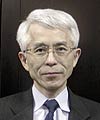Role of the Science and Core Technology Laboratory Group in NTT
—The Science and Core Technology Laboratory Group consists of five laboratories all involved in research and development activities. What is the role of this laboratory group in NTT?
The NTT research system consists of three laboratory groups containing twelve research laboratories. Having a long-term vision, our group promotes research of basic and advanced technologies as a "rear guard" for the two other laboratory groups—Cyber Communications Laboratory Group and Information Sharing Laboratory Group—and their seven research laboratories. We aim to cover all aspects of information communications, from very basic re search such as quantum physics to communication science and device technology, in the three research areas of futuristic communications and networks, photonic and ubiquitous hardware, and science (Fig. 1).
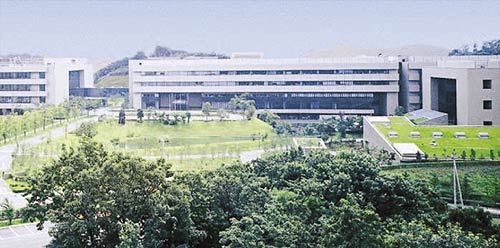
Fig. 1. NTT Science and Core Technology Laboratory Group, Atsugi.
—It sounds like you have an inconspicuous but vital role throughout NTT R&D.
That's right. Considering that our work ranks as basic research, we do lots of research that cannot be quickly applied to practical applications. Yet, at the same time, we know that we must have a clear direction while keeping in mind the prospects for the entire information-communications industry. Right now, everyone at NTT is focusing on the Next Generation Network (NGN), and as keywords like "broadband" and "ubiquitous" take root, I see NTT taking on two missions: further pursuing the conversion to broadband networks and creating new industries symbolized by the word "ubiquitous." There seems to be no doubt about this.
—Looking at worldwide trends, basic research appears to be shrinking. May I ask what the significance of basic research is?
Make no mistake about it, NTT is the only carrier in the world that is performing basis research at the moment. We are going against the flow, and there are times when we cannot help but have some doubts about our purpose. But speaking of broadband, a survey carried out last year by the Ministry of Internal Affairs and Communications (MIC) found that Internet traffic is increasing at an annual rate of 150% and it can be expected to increase by 100 to 1000 times within a few decades. Amidst this dramatic growth, there is certainly no other path than a return to basic research, which we must pursue wholeheartedly if we are to provide innovative technology and satisfy the needs of society.
Some people think that the information-communication industry is maturing, but I beg to differ. I am convinced that the present state of affairs is simply a temporary lull in the industry and that a new period of radical change awaits us. What specific changes will occur I cannot say for certain right now, but I do know that NTT will have to take on a global leadership role at that point in time. For this reason, it is absolutely essential that we undertake basic research. I am confident that we are the only research laboratory not only in Japan but also in the whole world that has the ability to compete in such a time of change and come out on top.
—Basic research at NTT has a long tradition, beginning at the Basic Research Laboratories, the forerunner to the Science and Core Technology Laboratory Group. What are some landmark research results?
The first things that come to mind are NTT's achievements in the field of optical communications. The development of vapor-phase axial deposition (VAD) and our work in wavelength division multiplexing (WDM) are two noteworthy examples. Also, the leading role that NTT took in implementing optical amplifiers is well known. More recently, NTT successfully demonstrated a transmission capacity of 14 Tbit/s over a single optical fiber—a world record. In this way, NTT has provided many world firsts among research results at a practical level. Today, 30 years after beginning the development of fiber-to-the-home (FTTH) technology, NTT has become a world leader in optical communications. In the years to come, we know that we must continue to make contributions to the construction of a broadband Internet. (Figs. 2 and 3.)
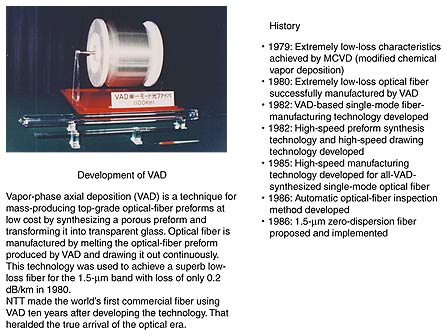
Fig. 2. Birth and development of optical network technology.
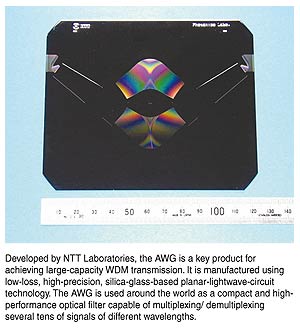
Fig. 3. Arrayed-waveguide-grating (AWG).
—I now have a good understanding of why it is important and necessary for a carrier to undertake basic research. But at the same time, aren't you working under restrictions, including budget constraints?
I believe that it is firmly recognized within the company that various platform technologies originating in basic research are extremely important for the future expansion of NTT. Of course, we cannot deny that research spending is dependent on profits, and we recognize that severe conditions will continue for a while. But that being said, there is no reason for stopping research activities. Conversely, it is incumbent on us researchers to promote specific technologies, proposals, and research achievements within the company.
—Under these conditions, what research issues do you face and what is your outlook for the future?
There are a number of issues. To give one just one example, we would like build another "pillar" or foundation for the ubiquitous network. We are now performing very detailed research on this. Also, as a diverse range of terminals is expected to appear from here on, users will want to be able to use their terminals without having to worry about restrictions imposed by the network. This is a challenge that we would like to take up.
The ubiquitous era will be an era of diversity. I believe that diversity can be achieved by extracting the latent ability of the network, which will in turn give rise to a new sense of value. Up to now, the network has been formed in combination with terminals, i.e., computers, but from here on, a diverse array of handy terminals is set to appear in explosively increasing numbers. To make these terminals more convenient and easier to carry around, we must enable the network to take over the functions performed by earlier terminals as much as possible. To keep one step ahead of its worldwide competitors, NTT recognizes the importance of ongoing research and the accumulation of research results while keeping in mind the need to create future industries with an outlook of 10 and 20 years (Fig. 4).
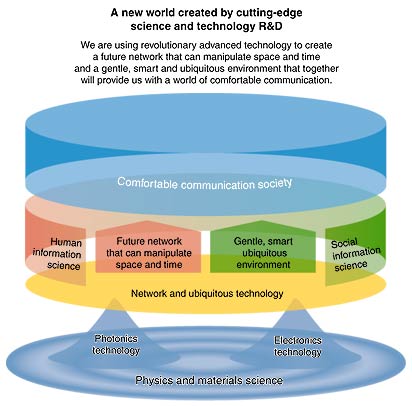
Fig. 4. A world of comfortable communication.
↑ TOP
Dissemination of information through NTT Technical Review on the Web
—NTT Technical Review has become a Web publication from this issue. This appears to be an important move.
Yes, it is. I expect to see NTT's role as a world leader in information-communications expand after this conversion to a Web-based format. The formation of a community is an absolute requirement for developing practical technology through the accumulation of basic research. To this end, it is first important that one's own information be disseminated. At the risk of blowing our own horn, let me say that the Science and Core Technology Laboratory Group has the seeds of what could become very important and interesting technology. And to raise the importance of this technology, we need supporters. The publication of technical papers in international journals combined with the NTT Technical Review has played a major role in this regard, but paper has its limitations. The conversion to a Web-based publication represents a dramatic leap forward for NTT Technical Review as a means of gaining support for the research work of the Science and Core Technology Laboratory Group.
—Specifically, what kind of changes do you foresee?
Well, while the traditional format of journal papers will not change, publication on the Web means that we can make use of new techniques of expression such as moving pictures. I hope to provide an extensive array of content. I can envision a forum for interactive communication enabling information to be exchanged with overseas researchers, and I can imagine the use of diverse types of drawings to introduce research on an international-conference level. In this way, we can create mechanisms to make our results more interesting and attract more readers. There are also plans for adding links to related Web pages and glossary entries and also for providing search functions. So there's a lot to look forward to for all of us.
—Will the emphasis be on promoting Japan's leadership role to developing countries or on calling for information sharing with developed countries? Also, what fields and R&D phases will be most represented by the papers appearing in the new NTT Technical Review?
That depends on the technical content. For technology in the initial phase, we would like to share information as much as possible with a strong desire to increase the number of supporters for our technology. For technology that is approaching the product level, on the other hand, we are entering a phase where we would like our research results to be understood and used. The NTT Technical Review runs articles from all the R&D departments of NTT and the NTT Group, which means that the fields that are represented are numerous and wide-ranging. Accordingly, since the regions in the world to which we would like to promote our technology depend on the R&D phases of a wide variety of submitted papers, the best approach is to disseminate the information in NTT Technical Review to the entire world. This will be possible with a Web-based format.
↑ TOP
Current activities at the Science and Core Technology Laboratory Group
—I'd like to ask you about activities within the group. Are there any kind of training seminars?
Yes. A study group called the BRL School is held every year by the Basic Research Laboratories. We invite world-class lecturers, including Nobel prize winners, and send out a call for participation to many overseas countries. However, because this event is so popular, the number of applicants far exceeds the available space. Applicants must consequently go through a screening process, but as a result, the BRL School brings together a group of exceptionally talented people. Being able to interact with such a world-class group of lecturers and participants is very stimulating for us researchers in the Science and Core Technology Laboratory Group. Also, the ratio of overseas researchers in the group is relatively high at about 10%, and this provides us with many opportunities to engage in lively discussions with them and enables everyone to help each other develop through mutual encouragement.
—Are you involved in any way with the local community?
Yes, we certainly are. To begin with, we hold an open house for local residents every year. The Science and Core Technology Laboratory Group uses a wide range of chemicals, including gases, in device research, and one aspect of this open house is to dispel any anxiety that local residents might have about our work and to gain their trust. Although we adopt thorough safety measures in managing drainage to prevent water pollution and other problems, allowing local residents to come inside our laboratories is the best way to foster understanding.
Also, considering the general concern about the falling popularity of maths and science in recent years, the open house features exhibits aimed at junior-high-school students and students in the upper grades of elementary school. These exhibits have also been enjoyed by adult visitors. Last year, an average of 1200 people per day came through our doors.
—What kind of attitude would you like to see staff researchers adopt for the future?
An era of sudden change in which new values and industries can be created with knowledge is not only a challenging and interesting era for us researchers but also a difficult and demanding one. That is to say, it's an era in which new ideas and knowledge quickly lose their value and become commonplace and the next new idea is always in demand. I think that allowing yourself to become content in one place will quickly relegate you to a catch-up position. I would like researchers to be constantly aware of their ability to generate new knowledge and to be fervently engaged in their research. One comment that I often hear today is "I should be doing interesting research," but I think each and every researcher should give careful thought to what "interesting" means. In my opinion, what is really "interesting" is research that leads to solutions to future needs and creates new value. In the years to come, I believe that undertaking research with the attitude that "I myself will work to produce research results that can make truly useful contributions to society" will become extremely important.
In addition, researchers will need to develop a feel for management in a broad sense. Up to now, the basic approach to R&D has been to have engineers and scientists solve problems given to them by executive management. From here on, however, researchers themselves will also have to suggest problems. Each researcher will have to take on the roles of management, research, and value creation and will need to acquire a knack for self-contained work. I think it will become important for us researchers to overcome the traditional organizational framework and become active in a wide range of fields while improving our individual skills.
—What lies ahead for the Science and Core Technology Laboratory Group?
The Science and Core Technology Laboratory Group covers diverse fields from materials properties to services in an organization that pursues research through vertical integration. At present, we are discovering new directions as various fields in the organization begin to converge. This, I believe, is an outstanding feature of our group, and we intend to capitalize on this flexibility to double or triple our collective strength and move forward with timely results. At the same time, we take our responsibility as an NTT laboratory group very seriously, and we will endeavor to produce research results that can make truly useful contributions to society in addition to presenting groundbreaking research papers. I believe that this pressure to produce results that can be widely used in society can lead to real technology. For the future, our aim is to bring into existence a true information-sharing society by disseminating information that can drive NTT Group business and by researching and developing information-sharing platform technologies.
↑ TOP

